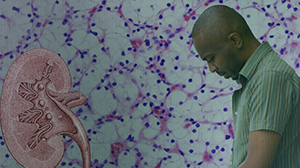NEW YORK (Reuters Health) – For women with proven stress urinary incontinence, tension-free vaginal tape provides lasting relief, according to results of a 10-year follow-up study conducted in Italy.
The 10-year results “seem to demonstrate that TVT is a highly effective option for the treatment of SUI, recording a very high cure rate with low complications,” report Dr. Maurizio Serati from University of Insubria in Varese and colleagues in a paper online January 26 in European Urology.
They note that tension-free midurethral slings are one of the most effective and popular approaches for the surgical treatment of SUI and are currently considered the gold standard, despite a lack of data on long-term outcomes.
Between 2000 and 2001, 63 women with proven SUI underwent standard retropubic TVT procedures at the urogynecologic unit at their institution. None of the women had mixed incontinence and/or anatomic evidence of pelvic organ prolapse.
All of the procedures were performed by the same surgeon using the technique originally described by Ulmsten et al in 1996 (Int Urogynecol J Pelvic Floor Dysfunct 1996;7:81-85). Intraoperatively, bladder perforation occurred in two cases; no severe bleeding or other complications occurred.
At 10 years, 58 of the 63 women (92%) were evaluated; only 5 women (8%) were lost or no longer evaluable. At this time, subjective, objective and urodynamic cure rates were 89.7%, 93.1% and 91.4%, respectively, and these rates were stable across the study period (p>0.99).
The researchers say de novo symptoms of overactive bladder were reported by 30.1% of women at 3-months (19 of 63) and 18.9% (11 of 58) at 10-year follow-up, despite an aging patient population. Still, the investigators say, the early postoperative onset of de novo overactive bladder symptoms, especially if persisting over the year, “could be the most relevant clinical issue related to TVT.”
For most of the patients with de novo overactive bladder, urodynamically proven detrusor overactivity was the underlying pathophysiologic condition. Most of these women (84.2%) were treated with antimuscarinic drugs, but 43.8% had not responded by 12 weeks.
In multivariate analysis, independent predictors of SUI recurrence were maximum detrusor pressure during the filling phase >9 cm H2O and maximum detrusor pressuring during the voiding phase ≤ 29 cm H2O at preoperative urodynamic assessment (hazard ratio 16.2 and 8.0, respectively). Obesity also predicted SUI recurrence (hazard ratio 17.1).
SOURCE:




